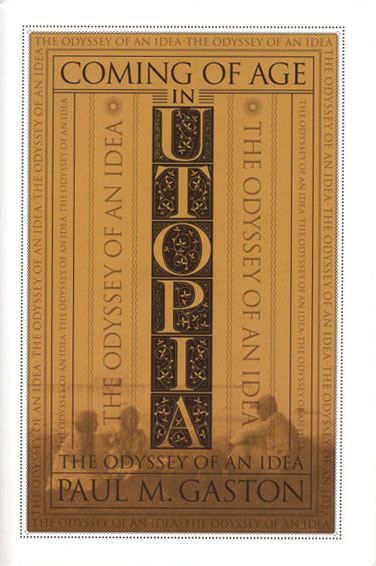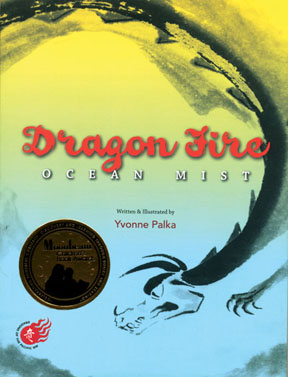Enterprise Solutions in the Developing World
 Michael Fairbanks, Marcela Escobari-Rose ’96, and Elizabeth Hooper, In the River They Swim: Essays from Around the World on Enterprise Solutions to Poverty (Templeton Press, 2009)
Michael Fairbanks, Marcela Escobari-Rose ’96, and Elizabeth Hooper, In the River They Swim: Essays from Around the World on Enterprise Solutions to Poverty (Templeton Press, 2009)
What leads to economic development in countries and regions around the world? Marcela Escobari-Rose ’96 and three co-editors/co-authors offer a distinctly different approach to this question: They nominate entrepreneurship as a central factor. In 29 essays, including two by Escobari-Rose, the role of human capital and initiative in creating paths out of poverty for poorer countries is highlighted. Drawing on personal reflections, the essayists describe incidents from their work as international development consultants. Some essays rely heavily on personal insights and captivating anecdotes; others recount experiences in working with the puzzles facing would-be entrepreneurs in various countries where they have worked.
Like a number of the contributors to this volume, Escobari-Rose—currently executive director of Harvard’s Center for Economic Development—hails from outside the United States. A native of Bolivia, she has worked for both public- and private-sector firms, focusing on the intersection of opportunities from new technologies and local habits based in older cultural patterns. Her essays take us into two countries—Jamaica and Mexico—and point toward opportunities that are almost within reach for the poor populations there. To close the gap and snatch such opportunities—increasingly plentiful in the globalizing world of new technology and rapid information-sharing—requires lifting constraints on entrepreneurial efforts and/or inspirational leadership. The latter is particularly stressed by her principal collaborator, Michael Fairbanks, who muses on the differences that honest and ambitious leaders can make.
The volume is divided into three parts: The Journey, Strategies for Prosperity, and Globalization. In each section, the essayists’ styles and admonitions are diverse and diffuse. Some conclusions are offered by authors with capacious eldership experience, including head of state (Paul Kagame of Rwanda) and with international financial bodies (Luis Alberto Moreno, president of the Inter-American Development Bank). Others are offered by experienced advisers to development projects. The inspirational theme of liberating entrepreneurial capacities is advanced in a foreword by the celebrated proponent of a purposive life—Pastor Rick Warren.
Collectively, these authors envision that the way forward for development should rest on a paradigm shift in framing the development process—moving away from poverty reduction and toward wealth creation. The initial results of a multitude of enterprise experiments in developing countries, such as Rwanda, call readers to see that enterprise empowers people within various cultures to transform their own lives for the better. In contrast to one-size-fits-all programs of poverty reduction and state-led change that mold people into despondent paupers who languish for generations, enterprise uplifts and enriches their whole society in the process.
This collection differs from most books on development, including those that also emphasize entrepreneurship and markets as key to growth. Its lessons are drawn from direct experiences rather than objective, dispassionate study. Each essay is anchored in the perspectives of individuals directly engaged in a development undertaking. The book’s title urges readers to grasp insights based on the testimony and results of those in the flow of events; the subtitle expresses the structure and focus of the book. The river metaphor—from the Sufi proposition that a best understanding comes from jumping in and swimming—rationalizes the testimonial form of argument.
I found this approach engaging but often unpersuasive. However, my experiences from work on development and foreign aid projects lead me to agree fully with two points: Countries are different, so context matters in what works. And individual leadership is especially important in societies where institutions are in flux. Translating such insights and the exhortation to reward entrepreneurship into better paths to development, however, is another matter. Overall, the book offers much inspiration, but policy options are hard to find.
Culture—whether found in anachronistic international corporate mores (as noted by Malik Fal) or traditional business practices of local producers and traders (most poignantly in Afghanistan)—provides the principal barrier to economic development. Capital—social, physical, institutional, and other forms related to unlocking human capabilities—needs to be built and released in the situations reviewed by the authors. Although new ideas blended with individual aspirations and practical opportunities are cited in case after case as the missing formula for improved incomes and business success, no single measure is prescribed by the authors. Rather, context-based lessons about what is missing, or what is needed, abound. Want to sell music from Jamaica, marble from Afghanistan, or coffee from Rwanda? Then “tear down that wall” of particular inefficiencies. Most of these turn out to be traditional practices such as wastefully dynamiting quarries to secure marble slabs.
Cultural barriers may well be the most basic constraint keeping people in poverty and blocking economic development, but these hortatory essays are easier to read than to follow.
Raymond Hopkins
Richter Professor Emeritus of Political Science
MORE BOOKS
 Julia Bryan-Wilson ’95, Art Workers: Radical Practice in the Vietnam War Era, University of California Press, 2009. This is the first book to examine the artistic movement of the late 1960s and early 1970s embodied by a group of American artists and critics who—responding to the political unrest generated by the Vietnam War—sought to expand the definition of creative labor by identifying themselves as “art workers.”
Julia Bryan-Wilson ’95, Art Workers: Radical Practice in the Vietnam War Era, University of California Press, 2009. This is the first book to examine the artistic movement of the late 1960s and early 1970s embodied by a group of American artists and critics who—responding to the political unrest generated by the Vietnam War—sought to expand the definition of creative labor by identifying themselves as “art workers.”
Samuel Cohen ’89, After the End of History: American Fiction in the 1990s, University of Iowa Press, 2009. Asserting the literary and historical importance of the period between the fall of the Berlin Wall and that of the Twin Towers in New York City, the author examines six 1990s novels and two post-9/11 novels that explore the impact of the end of the Cold War.
 Liza Dalby ’72, Hidden Buddhas: A Novel of Karma and Chaos, Stone Bridge Press, 2009. One Buddhist priest struggles with his religion’s dictates. Another rebels. An American student suspects the purpose of the mysterious hidden Buddhas of Japan, just as he falls in love with a Japanese artist. The novel turns a cosmopolitan eye on discipline and decadence in religion, fashion, politics, and modern life.
Liza Dalby ’72, Hidden Buddhas: A Novel of Karma and Chaos, Stone Bridge Press, 2009. One Buddhist priest struggles with his religion’s dictates. Another rebels. An American student suspects the purpose of the mysterious hidden Buddhas of Japan, just as he falls in love with a Japanese artist. The novel turns a cosmopolitan eye on discipline and decadence in religion, fashion, politics, and modern life.
Shelley Fisher Fishkin ’71 (editor), Mark Twain’s Book of Animals, University of California Press, 2009. Illustrated by master engraver Barry Moser and containing introduction, notes, and afterword by the editor, this volume gathers writings from the full span of Twain’s career. Showcasing Twain at his silliest and most philosophical, sardonic, and sentimental, the stories elucidate his special attachment to and regard for animals.
 Paul Gaston ’52, Coming of Age in Utopia: The Odyssey of an Idea, NewSouth Books, 2010. In this memoir, the historian and civil rights activist reveals his deep roots in the unique Alabama town founded in 1894 by his grandfather and later led by his father.
Paul Gaston ’52, Coming of Age in Utopia: The Odyssey of an Idea, NewSouth Books, 2010. In this memoir, the historian and civil rights activist reveals his deep roots in the unique Alabama town founded in 1894 by his grandfather and later led by his father.
 Giuliano Hazan ’81, Thirty Minute Pasta: 100 Quick and Easy Recipes, Stewart, Tabori, and Chang, 2009. This winner of the IACP Cooking Teacher of the Year Award and son of well-known Italian cookbook author Marcella Hazan carries on the family tradition, sharing quick and easy secrets to pasta success.
Giuliano Hazan ’81, Thirty Minute Pasta: 100 Quick and Easy Recipes, Stewart, Tabori, and Chang, 2009. This winner of the IACP Cooking Teacher of the Year Award and son of well-known Italian cookbook author Marcella Hazan carries on the family tradition, sharing quick and easy secrets to pasta success.
Robert Keighton ’53, Paintings of Robert Keighton: Landscape Paintings from 1995 to 2008, Artopia Editions, 2009. A professor of politics and history at Curry College in Milton, Mass., Keighton first took up art at age 50. His favorite location to paint is the Medfield marshes near his home.
 Richard Lyman ’47, Stanford in Turmoil: Campus Unrest, 1966–1972, Stanford University Press, 2009. In this cross between a memoir and history, the former Stanford vice president, provost, and president portrays from an insider’s perspective the school’s experience of dramatic political unrest during the late 1960s and early 1970s.
Richard Lyman ’47, Stanford in Turmoil: Campus Unrest, 1966–1972, Stanford University Press, 2009. In this cross between a memoir and history, the former Stanford vice president, provost, and president portrays from an insider’s perspective the school’s experience of dramatic political unrest during the late 1960s and early 1970s.
Patricia Munro ’76, Eva Siekierski, Monika Weyer, Wegweiser (Pathfinder) Evaluation: Von der Projektidee zum bleibenden Ausstellungserlebnis, Deutsche Bundestiftung Umwelt, 2009. Aimed at professionals in the exhibition field, this book (published in German) promotes the use of evaluation of every aspect of organizing and staging exhibitions, with the goal of providing a visitor-friendly and memorable experience.
Margaret Nelson ’66 and Anita Ilta Garey (editors), Who’s Watching: Daily Practices of Surveillance Among Contemporary Families, Vanderbilt University Press, 2009. This collection of essays explores the ways in which family members monitor themselves, other families, and their own borders.
Yvonne Palka ’60, Dragon Fire: Ocean Mist, HeartRock Press, 2009. This award-winning book, which is suitable for both children and adults, relates the adventures of two children who go camping on the coast of Washington and encounter a tribe of dragons. It mingles imagination and love of the natural world.
 Pat Paxson ’60, Bars and Windows: Diary of a Poet/Painter, Xlibris Corporation, 2009. In images and poems, the artist depicts themes including despair, separation, guilt, shame, anger, resentment, hope, and joy.
Pat Paxson ’60, Bars and Windows: Diary of a Poet/Painter, Xlibris Corporation, 2009. In images and poems, the artist depicts themes including despair, separation, guilt, shame, anger, resentment, hope, and joy.
Agustin Legido and Joseph Piatt ’75, Clinical Pediatric Neurosciences for Primary Care, American Academy of Pediatrics, 2009. This new clinical resource equips primary-care physicians with expert guidance on the diagnosis, evaluation, and management of a wide range of pediatric neurologic and neurosurgical conditions.
Sue Willis Ruff ’60 and Don Wilson, with illustrations by Lolette Guthrie, Artie and Merlin, Tenley Circle Press, 2009. This book, aimed at elementary school children, follows the adventures of Artie, a naive piglet, and Merlin, his wise bat friend, as they explore the world of mammals and the meaning of friendship.
Dom Sagolla ’96, 140 Characters: A Style Guide for the Short Form, John Wiley & Sons, 2009. One of the co-creators of Twitter offers an inside view of the history of the social blogging and micro-networking service as well as grammar rules for short-form writing, a catalog of writing styles, and inspiring quotations from some of the best Twitter writers.
David Paul Nord, Joan Shelley Rubin, and Michael Schudson ’69, A History of the Book in America, Volume 5: The Enduring Book, Print Culture in Postwar America, The University of North Carolina Press, 2009. This volume addresses the economic, social, and cultural shifts affecting print culture from World War II to the present.
 Herman Schwartz ’80, Subprime Nation: American Power, Global Capital, and the Housing Bubble, Cornell University Press, 2009. This study of the the collapse of the U.S. housing market focuses on the impact of U.S. regulatory failure on the economy worldwide, arguing that the “local” problem of the housing crisis puts not only the U.S. economic health at risk but also the primacy of the U.S. dollar in international finance, and U.S. hegemony in the world system.
Herman Schwartz ’80, Subprime Nation: American Power, Global Capital, and the Housing Bubble, Cornell University Press, 2009. This study of the the collapse of the U.S. housing market focuses on the impact of U.S. regulatory failure on the economy worldwide, arguing that the “local” problem of the housing crisis puts not only the U.S. economic health at risk but also the primacy of the U.S. dollar in international finance, and U.S. hegemony in the world system.
Angela Shaw ’90, The Beginning of the Fields, Tupelo Press, 2009. This collection of poems explores moments in the lives of diverse subjects, speaking of clothing and courtesans, marriage and motherhood, interiors, and landscapes of the author’s native West Virginia.
Miriam Wallace ’84, Enlightening Romanticism, Romancing the Enlightenment: British Novels from 1750 to 1832, Ashgate Publishing Limited, 2009. In this work, scholars who typically write under the rubric of the long 18th century or Romanticism examine novels claimed by both periods. Wallace also wrote Revolutionary Subjects in the English “Jacobin” Novel, 1790–1805, Bucknell University Press, 2009. This study explores the questions of subject formation and rights discourse in English novels of the 1790s.
Dorcas Molefe, Nkobi Owen Pansiri, Sheldon Weeks ’54, and others, Issues in Education, Pentagon Publishers, 2008. Aimed at policy-makers, planners, administrators, and decision makers at all levels, this compilation of articles examines and discusses issues relating to education in Botswana over a wide range of topics.
Erika Wood ’88, The Colorman, Tatra Press, 2009. This debut novel centers on the discoveries—both personal and artistic—of its central character, as she attempts to break into Manhattan’s art market and come to terms with revealed family mysteries.
OTHER MEDIA
 Jennifer Raikes ’93, Bad Hair Life, Middlemarch Films, 2003. This multi–award-winning film portrays the director’s history of trichotillomania, from pulling out her first eyelash at age 9, through years of embarrassment and hiding, to her present quest to understand this mysterious behavior.
Jennifer Raikes ’93, Bad Hair Life, Middlemarch Films, 2003. This multi–award-winning film portrays the director’s history of trichotillomania, from pulling out her first eyelash at age 9, through years of embarrassment and hiding, to her present quest to understand this mysterious behavior.
 Martha Spanninger ’76 (lead producer), Tom Brokaw presents “American Character” Along Highway 50, USA Network, 2009/10. Producer, project overseer, and writer Spanninger accompanied Tom Brokaw on the road as he sought to capture the changing face of the nation—travelling the historic Route 50 through the middle of the country and documenting the lives of Americans he met. Short “dispatches” aired throughout 2009 preceded an hour-long primetime documentary scheduled for broadcast in January.
Martha Spanninger ’76 (lead producer), Tom Brokaw presents “American Character” Along Highway 50, USA Network, 2009/10. Producer, project overseer, and writer Spanninger accompanied Tom Brokaw on the road as he sought to capture the changing face of the nation—travelling the historic Route 50 through the middle of the country and documenting the lives of Americans he met. Short “dispatches” aired throughout 2009 preceded an hour-long primetime documentary scheduled for broadcast in January.
 Email This Page
Email This Page